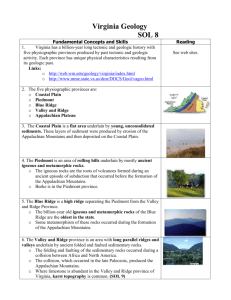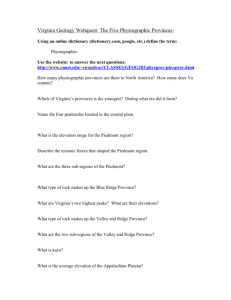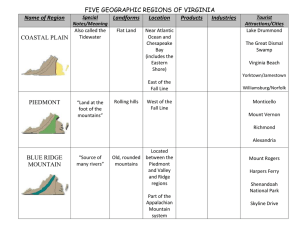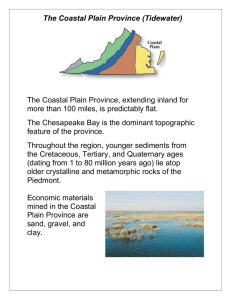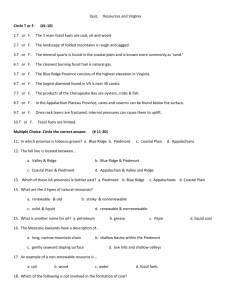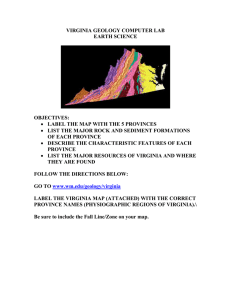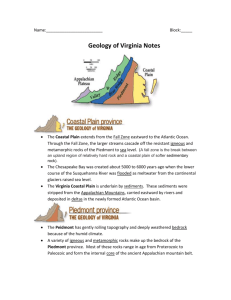Virginia's Physiographic Provinces
advertisement
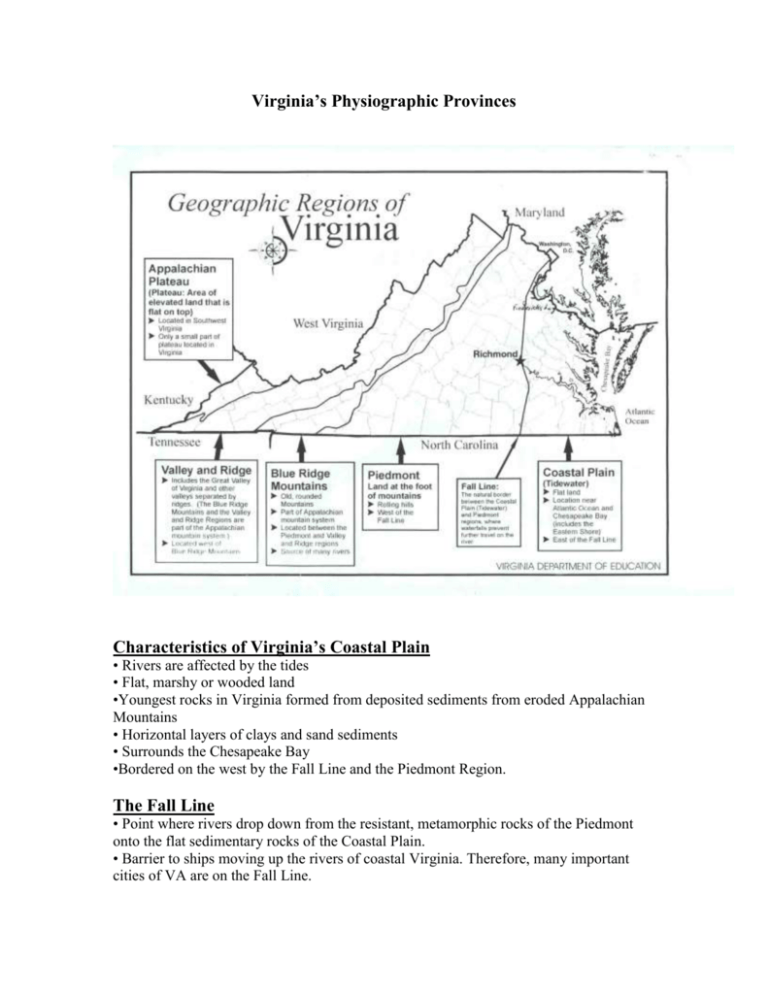
Virginia’s Physiographic Provinces Characteristics of Virginia’s Coastal Plain • Rivers are affected by the tides • Flat, marshy or wooded land •Youngest rocks in Virginia formed from deposited sediments from eroded Appalachian Mountains • Horizontal layers of clays and sand sediments • Surrounds the Chesapeake Bay •Bordered on the west by the Fall Line and the Piedmont Region. The Fall Line • Point where rivers drop down from the resistant, metamorphic rocks of the Piedmont onto the flat sedimentary rocks of the Coastal Plain. • Barrier to ships moving up the rivers of coastal Virginia. Therefore, many important cities of VA are on the Fall Line. The Piedmont • Formed during the collision between Africa and North America • Foothills of the Appalachians • Rolling metamorphic hills and valleys • Triassic basins found in this region • Eastern boundary is Fall Line; Western boundary is the Blue Ridge. The Blue Ridge Province •Highest elevation province of Virginia • Consists of the north-south trending Blue Ridge Mountains • Separates Valley and Ridge Province from the Piedmont The Valley and Ridge Province •Long, narrow ridges separated by equally long valleys •Ridges are made of hard, resistant rock •Valleys are softer, more easily eroded rock •Linear pattern is created by intense folding & faulting during continental collision •Limestone areas have karst topography & many caverns •Rivers trend north and south •Bordered by Blue Ridge and Appalachian Plateau Appalachian Plateau •Flat or nearly flat sedimentary rocks of Paleozoic age (225 - 500 million years old) •Very high, relatively flat relief •Coal deposits abundant •Not folded when Africa collided with North America
